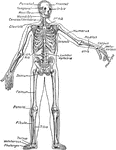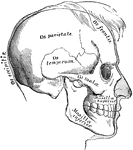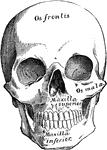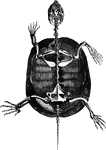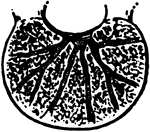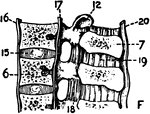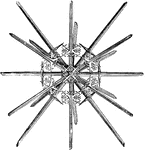
Human skeleton
"The human body, like a great building, has a framework which gives the body its shape and provides…

Human skeleton
"There are in all two hundred and six seperate bones in the adult skelton. The teeth are not bones,…

Lower Jaw of Megatherium Fossil Skeleton
The lower jaw and teeth of the Megatherium, elephant sized sloth. The teeth are quandrangular, or triangular…

Full Megatherium Fossil Skeleton
A full fossil skeleton of the Megatherium, an elephant sized ground sloth. The animal was extinct during…
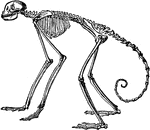
Side View of Skeleton of South American Spider Monkey
"In the other forms the number (vertebrae) varies between twenty and thirty three, the latter being…

The Axial Skeleton
"Fig 55. - Actual section of the body in the thoracic region of a bird. N, neural canal; H, haemal canal;…
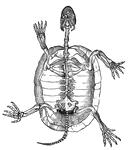
Tortoise Skeleton
Skeleton of a tortoise, seen from below, the plastron having been removed. (ca) carapace.
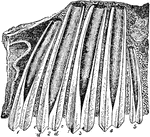
Upper Molar Teeth of Megatherium Fossil Skeleton
Illustration showing the upper molar teeth of the megatherium, a giant sloth. The teeth were 7 to 8…
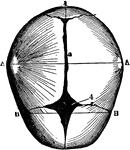
Human Skull at Birth
The skull at birth, superior suerface. The cranial bones of the infant at birth are not fullyformed…

Bird Skull
"Schizognathous skull of common fowl. pmx, premaxilla; mxp, maxillopalatine; mx, maxilla; pl, palatine;…
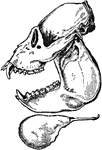
Side View of Howler Monkey
A side view of the howler monkey skull. The monkey have four sharp canines, long teeth on skull, on…
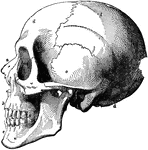
Human Skull
The skull. Labels: a, nasal bone; b, superior maxillary; c, inferior maxillary; d, occipital; e, temporal;…
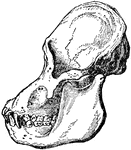
Adult Male Orangutan Skull Viewed from Side
An illustration of an adult male orangutan viewed from the side. The orbit part of the skull is more…

Sphenoid Bone of the Human Skull
Sphenoid bone, situated the anterior part of the base of the skull, articulating with all the other…
Human Spinal Column
Side view of spinal column, without sacrum and coccyx. Labels: 1 to 7, cervical vertebrae; 8 to 19,…
Spooky Hootenanny
The Skeleton asked his friends, "Do you think this is a gathering, a shindig, or a hootenanny?" The…

Human Sternum Bone
Sternum, front and side view. The sternum, or breast bone, is a flat narrow bone, situated in the median…
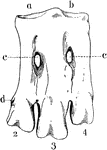
Front Left Tarsus of a Penguin
An illustration of the front left tarsus of a penguin. "a, articular facet for inner condyle of tibia;…
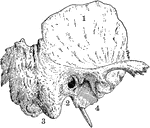
Temporal Bone of the Human Skull
Temporal bone of the human skull. The temporal bones are situated at the sides and base of the skull.…

Human Thorax (Chest)
Thorax. The thorax, or chest, is an elongated conical-shaped cage, formed by the sternum and costal…
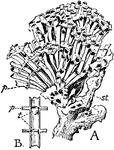
Colony of Tubipora Purpurea
"A Skeleton of a young colony of Tubipora purpurea. st, stolon; p, platform. B, Diagrammatic…
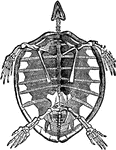
Skeleton of Turtle
"Turtle is, in zoology, the popular name for any species of the Cheloniidæ. They may be distinguished…
Ulna and Radius
"The ulna, or elbow bone, is the larger of these two bones. It is joined to the humerus by…
The Human Ulna and Radius
The Ulna and Radius. Labels: 1, radius; 2, ulna; o, olecranon process, on the anterior surface of which…

Human Vomer Nasal Bone
Vomer bone, a single bone placed at the back part of the nasal cavity, and forms part of the septum…

Vulture Skeleton
"Skeleton of Egyptian Vulture. (Neophron percnopterus), to show bones of bird. a, post-orbital process;…
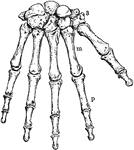
The Human Wrist and Hand Bones
Bones of the Wrist and Hand. Labels: m, metacarpal bones; p, phalanges; 3, bones of wrist.


